Cape Henry Lighthouse, Virginia Beach, Virginia
The Cape Henry Lighthouse at Virginia Beach was built in 1792 to watch over the shipping traffic in the south entrance of the Chesapeake Bay on the mid-Atlantic Coast. President George Washington himself was involved in the funding for this structure, and now the Cape Henry Lighthouse is a National Historic Landmark. Tourists may climb through this decommissioned lighthouse, which now stands proudly on the U.S. Navy Little Creek-Fort Story Joint Expeditionary Base East.
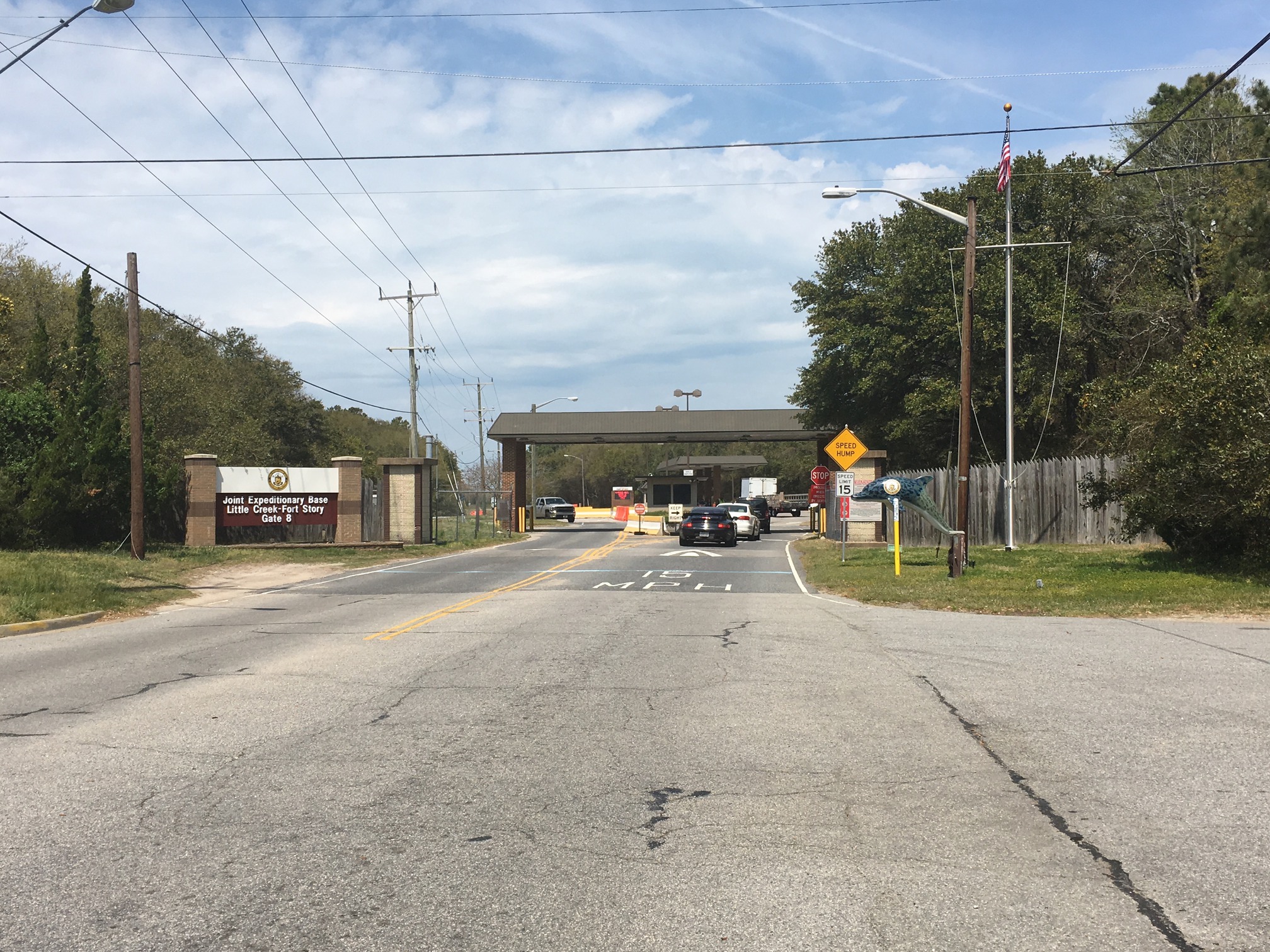
Getting to the Cape Henry Lighthouse is easy; it is located just east of
Virginia's First Landing State Park, off Shore Drive/Route 60 at the
intersection of Atlantic Avenue and a side street called 89th Street.
(Atlantic Avenue, Shore Drive, and Route 60 run parallel up and down the
Virginia Beach coastline.) Because the lighthouse is now part of a military
base, visitors need to be aware of the security expectations for tourists
entering the base to get to that lighthouse.
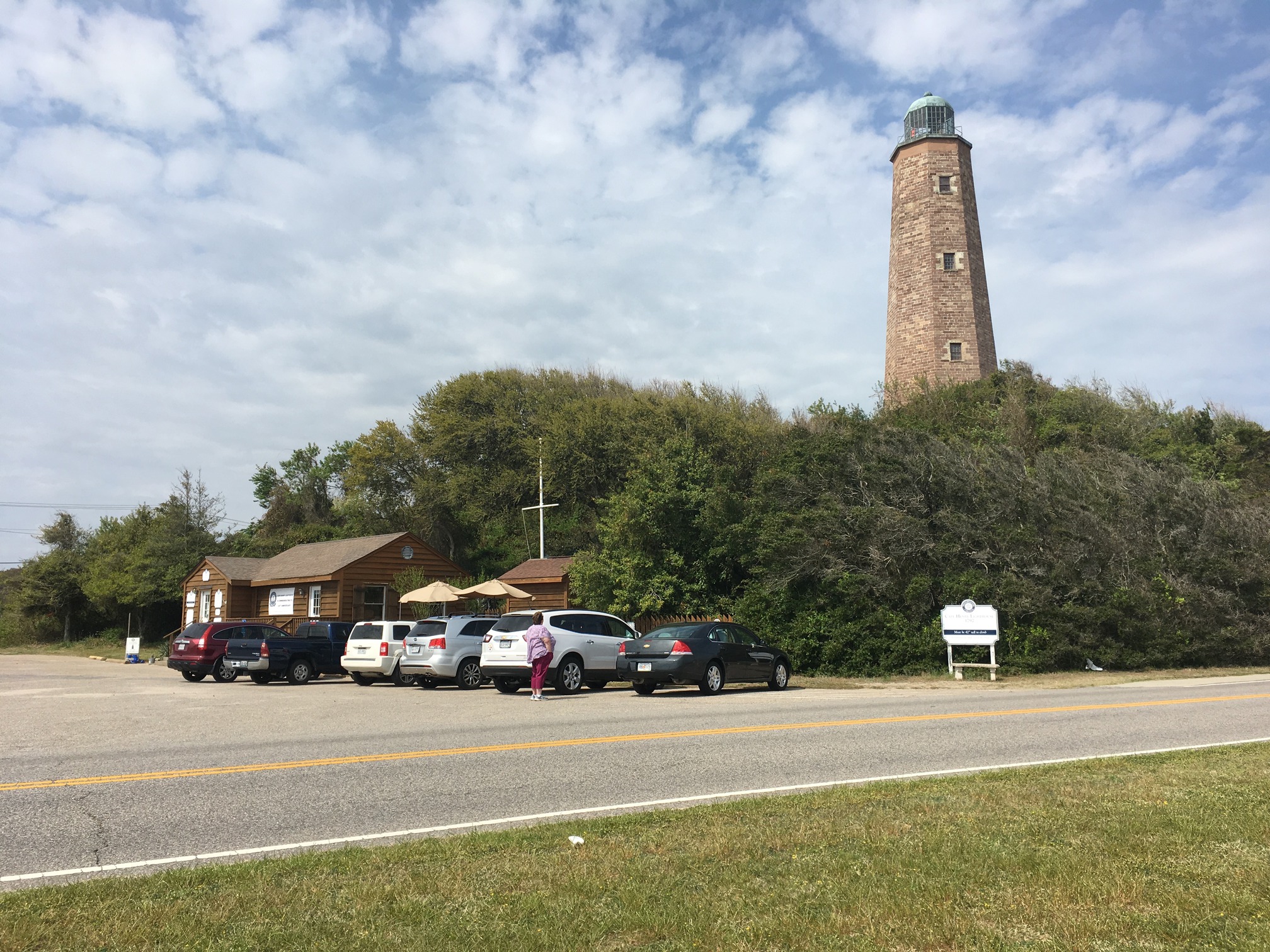
Getting to the lower grounds of the lighthouse requires a security check.
Everyone in the vehicle age 16 and over must have state photo
identification; visitors from some U.S. states may need passports in
addition to a driver’s license. The vehicle will be searched thoroughly,
including under the front hood; however, the guards on duty are very polite.
(Check the visitors website prior to visiting for full details.) The full
screening took about 15 minutes, with the driver being asked many questions.
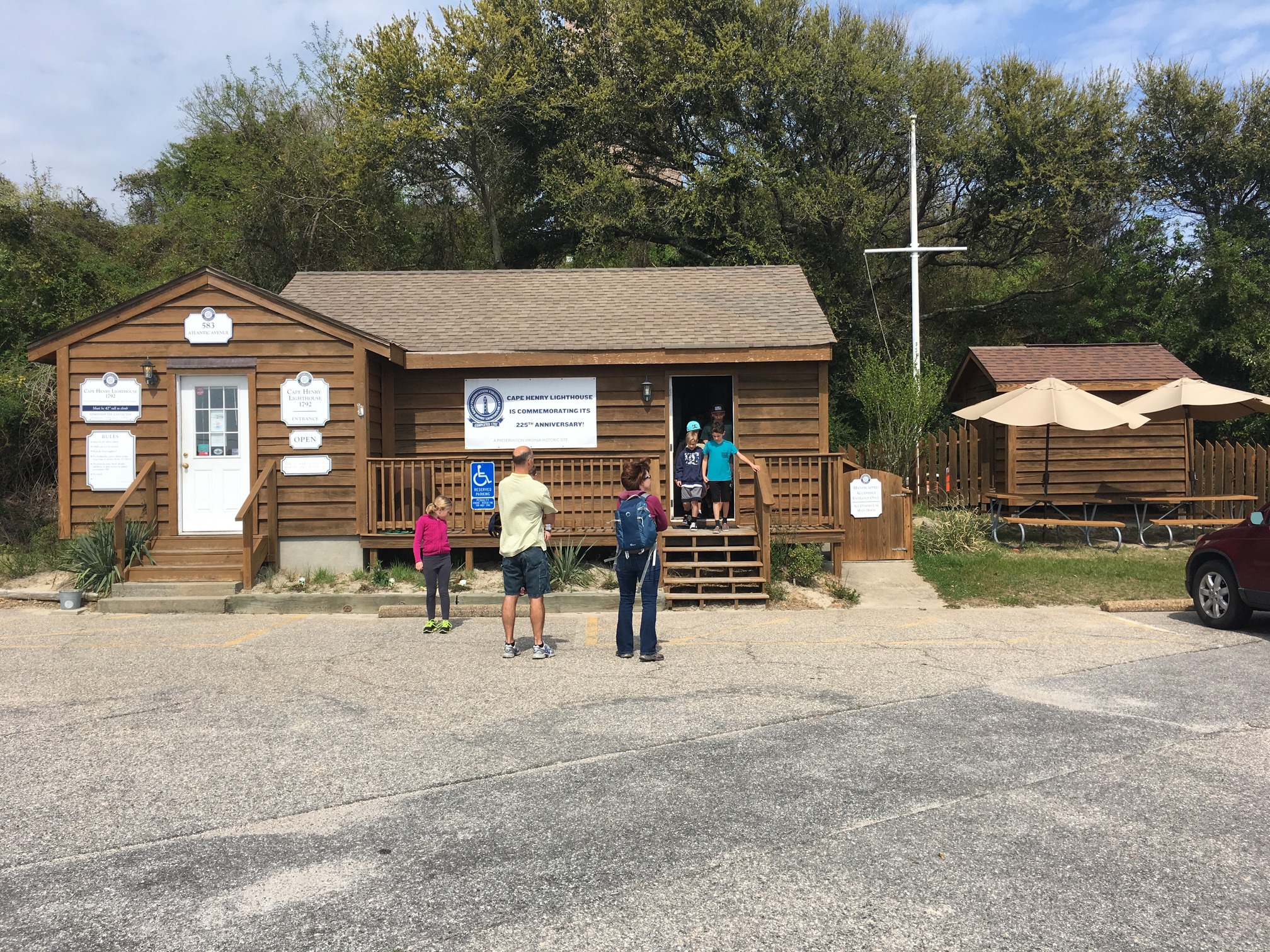
The lower grounds at the Cape Henry Lighthouse have plenty of parking, a
giftshop, a place to eat a picnic lunch with primitive facilities, plus
informative placards chock-full of history. Right behind this visitors’
center is the lighthouse, obscured by trees, and the massive stone staircase
leading up to the lighthouse. At this point, it’s time to head inside the
giftshop.
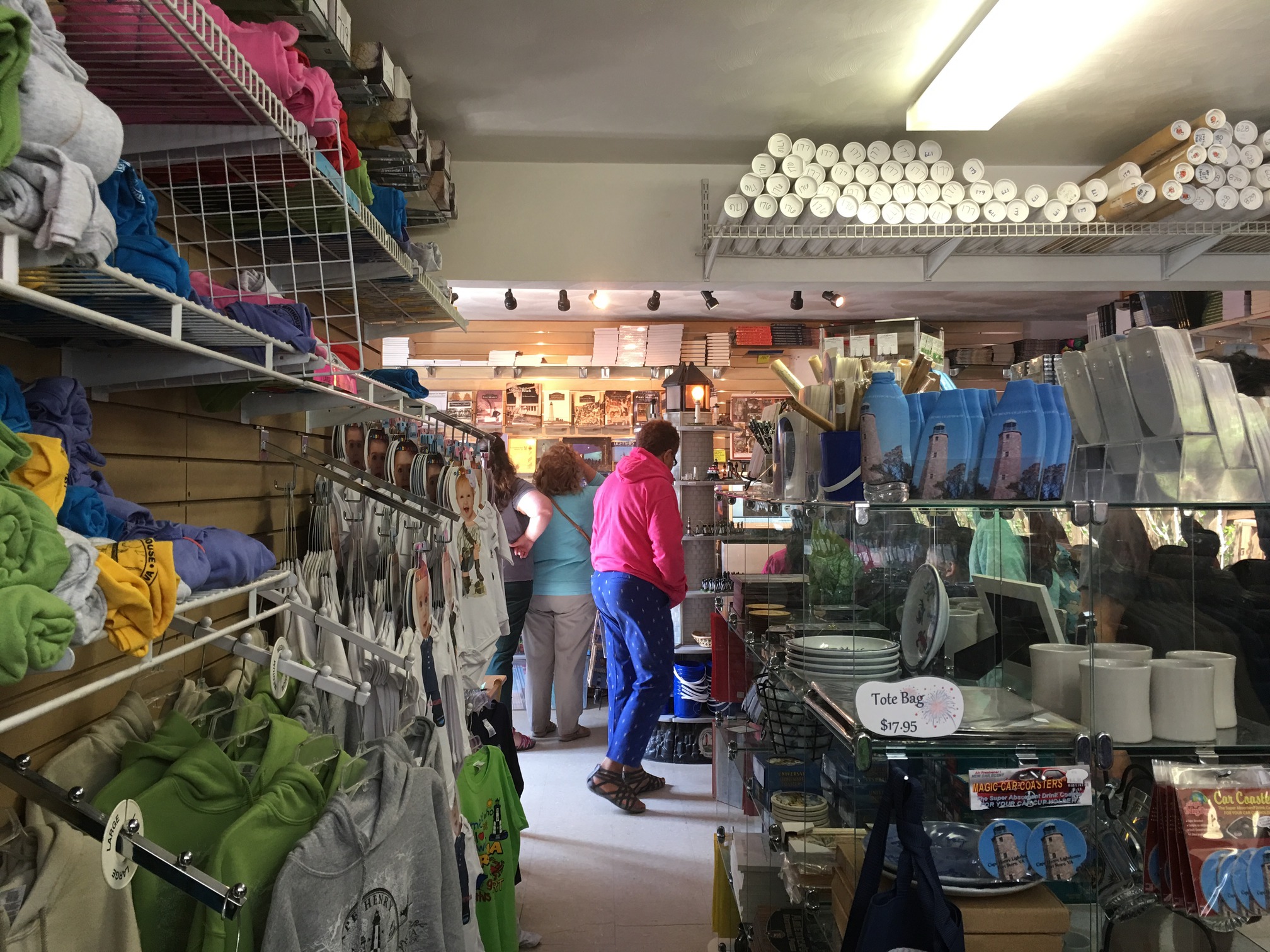
The giftshop is packed from floor to ceiling with every knick-knack,
t-shirt, gewgaw, and novelty imaginable pertaining to Cape Henry. The staff
here is also very friendly and knowledgable, and this is where visitors pay
an entry fee to go up the stone steps to the lighthouse. The fee is $8 for
people age 13 and over, with some discounts available. People must be at
least 42 inches tall to make the climb, which has a few challenges.
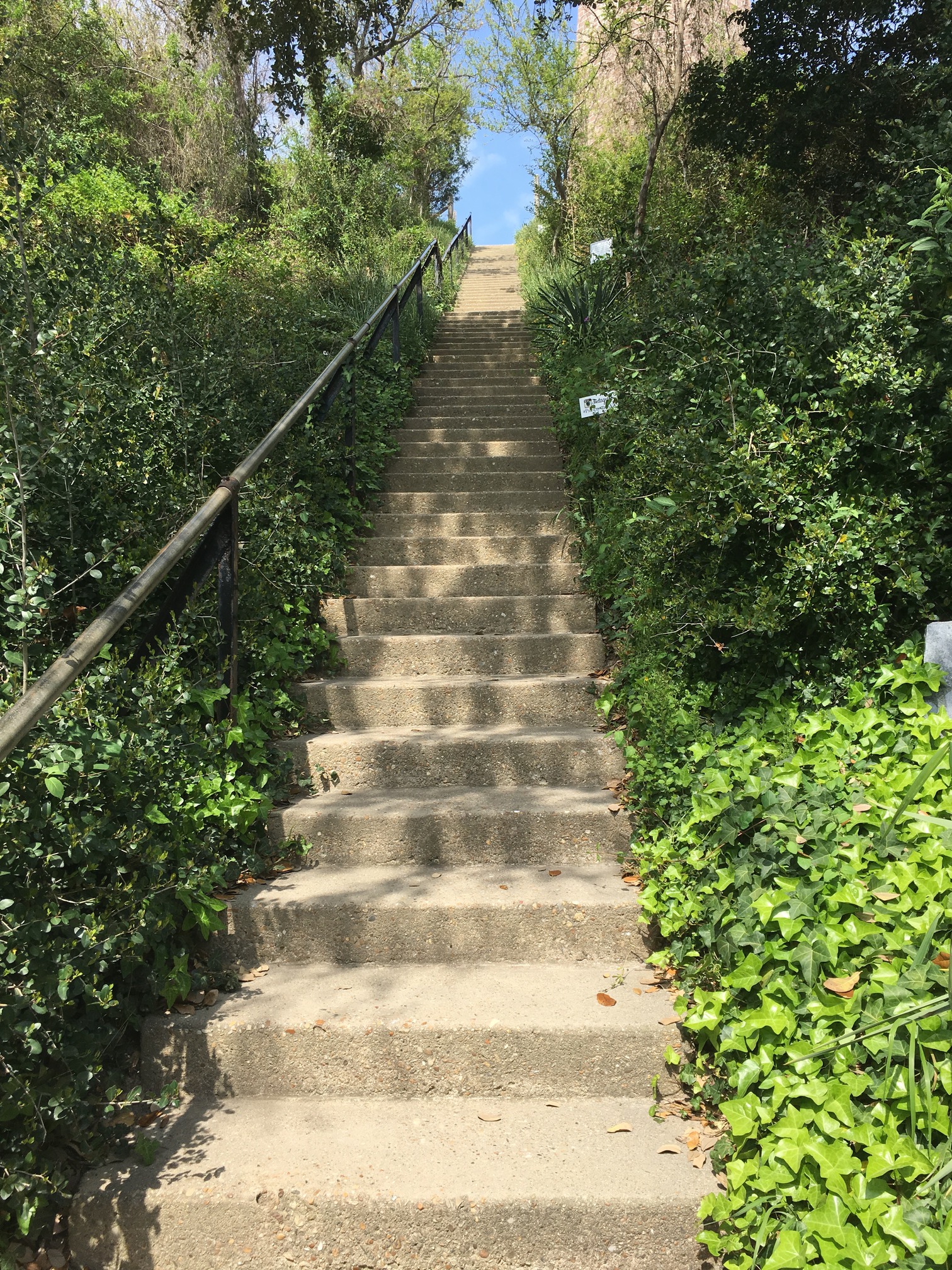
The path to the historic Cape Henry Lighthouse begins here. (The visitors’
web site strongly discourages flip-flops.) These nice stone steps are
actually the easy part of the visit; the wrought-iron steps inside the
lighthouse are a bit more challenging. No need to rush up the stairs here,
as there are some pretty wildflowers here plus a handful of informational
placards about the lighthouse in the early days.
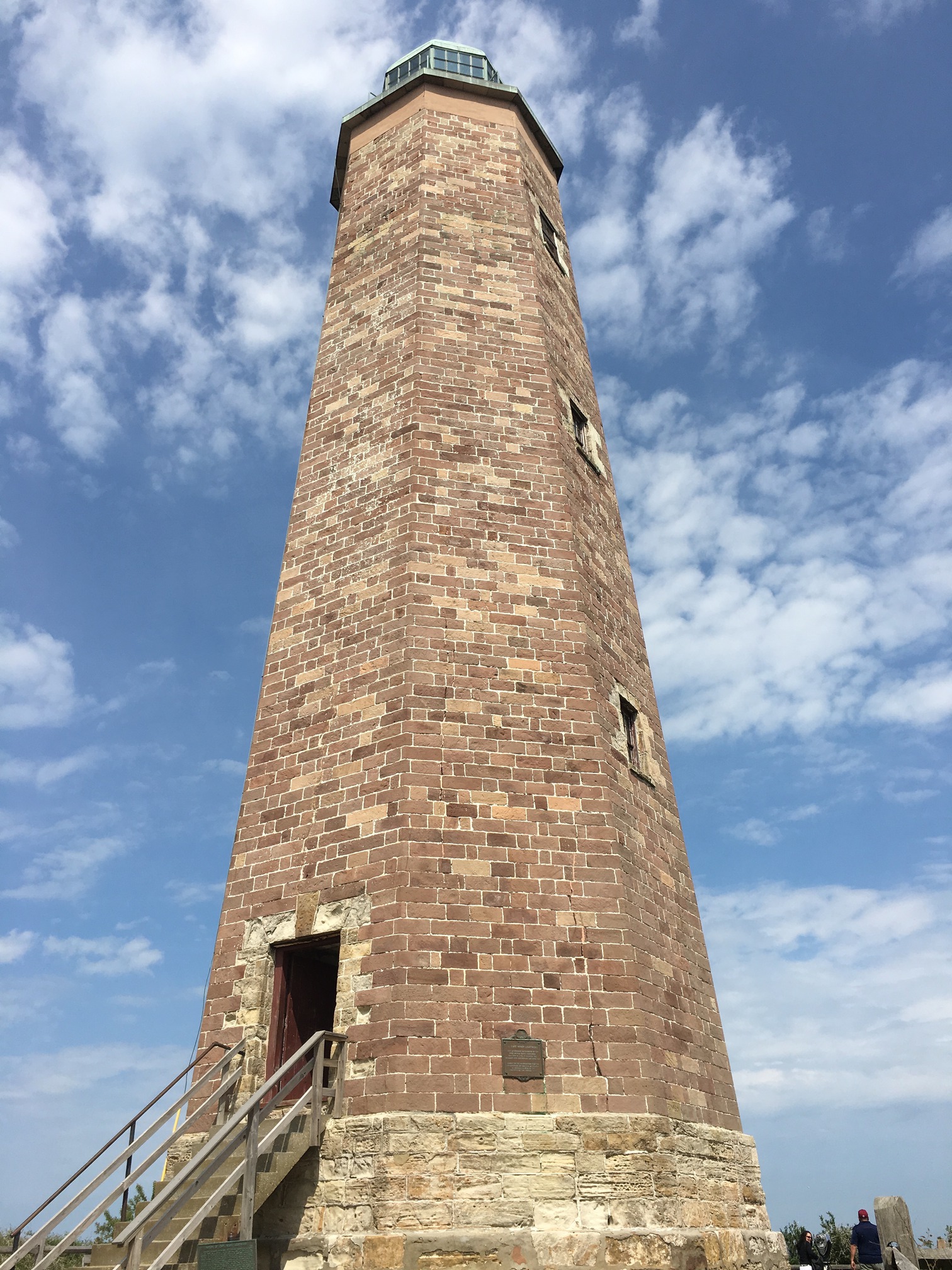
The Cape Henry Lighthouse has stood here at 90 feet tall since 1792, and
this image was taken on April 13th, 2017, at 11:30 am, under clear skies.
The idea for a lighthouse here actually began in 1720. The structure, though
receiving several improvements even in recent years, was decommissioned in
1881. The Cape Henry Lighthouse was named as a National Historic Landmark in
1970 and is still used passively as a daytime navigational aid. It has been
on the National Register of Historic Places since 1966.
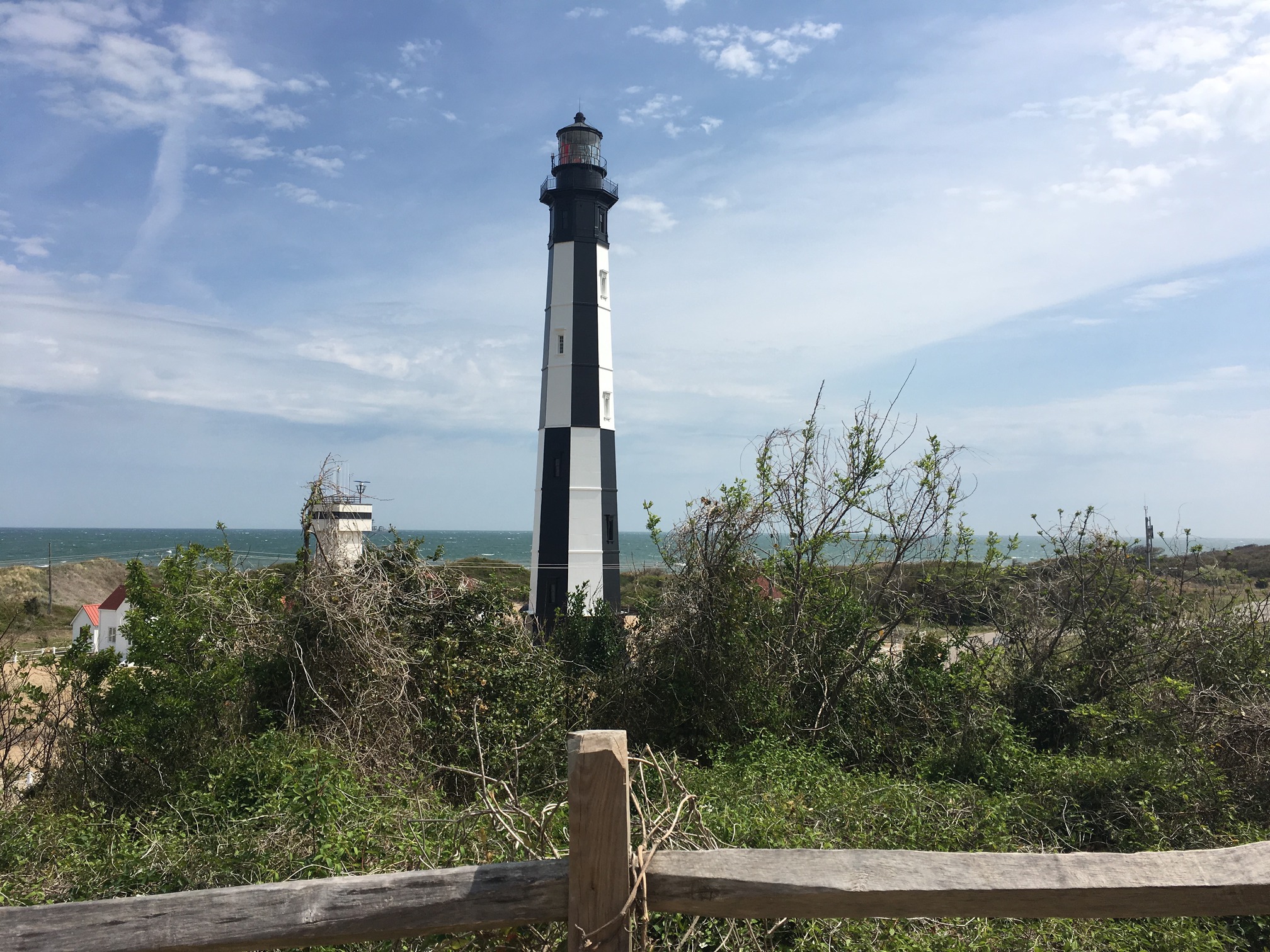
By 1870, Cape Henry Lighthouse was showing deep cracks in its sandstone
structure and its lantern was considered deficient. It had even been damaged
during the Civil War. So, plans were drawn up for a new cast-iron lighthouse
with a concrete foundation. The New Cape Henry Lighthouse stands at 163 feet
and was completed in 1881. It was fully automated in 1984 and is still in
use today. Unfortunately, it is off-limits to visitors.
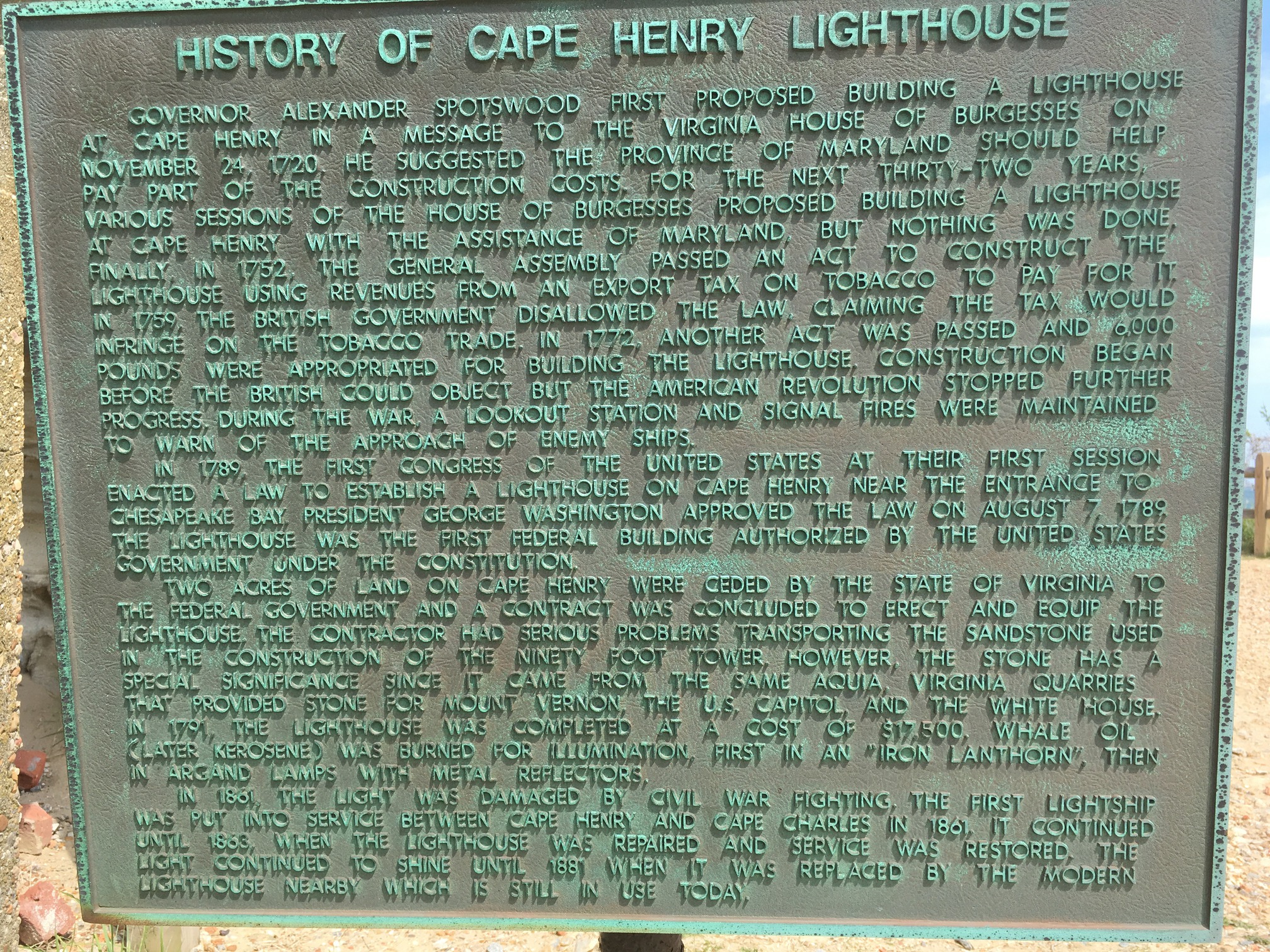
Despite the fact that this very spot overlooks so many of Virginia’s
waterways, decades went by before any structure was built. The plaque here
details the fits and starts of funding and construction for this project.
This is the first federal building constructed in the United States, and the
sandstone comes from the same Aquia quarry as the stones from Mount Vernon,
the White House, and the U.S. Capitol. For visitors using GPS, the official
address for the Cape Henry Lighthouse is 583 Atlantic Avenue, Ft. Story, VA
23459.
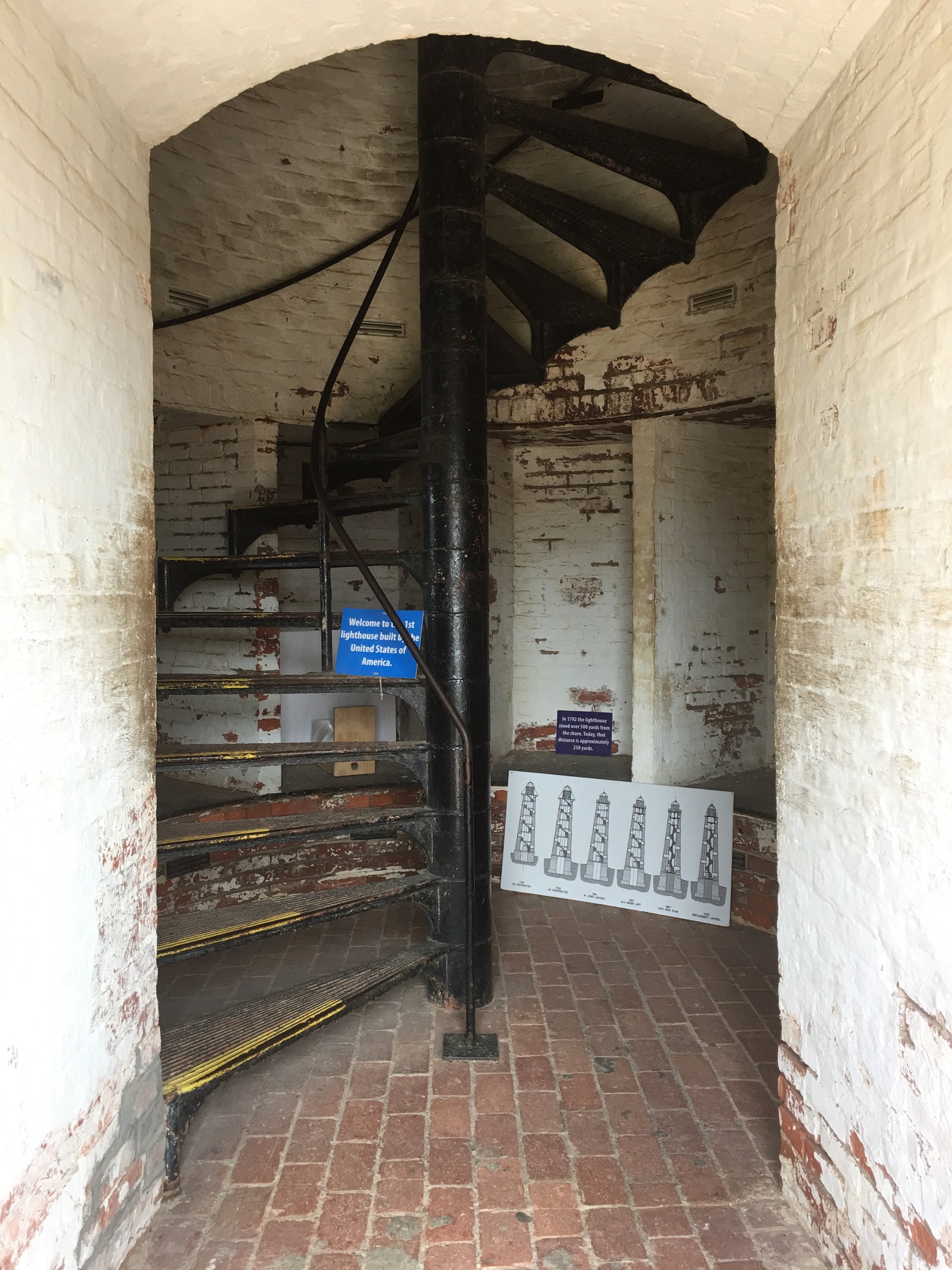
The entryway of the lighthouse shows many of the improvements made over the
years. In 1841, a W. Lewis Lantern was added; in 1857 a 2nd order light was
added; and also that year, bricks were added as a liner for the sandstone
walls. In 1953, the structure was damaged by Hurricane Barbara and was
repaired. But in 1867, the cast-iron stairs—shown here—were added.
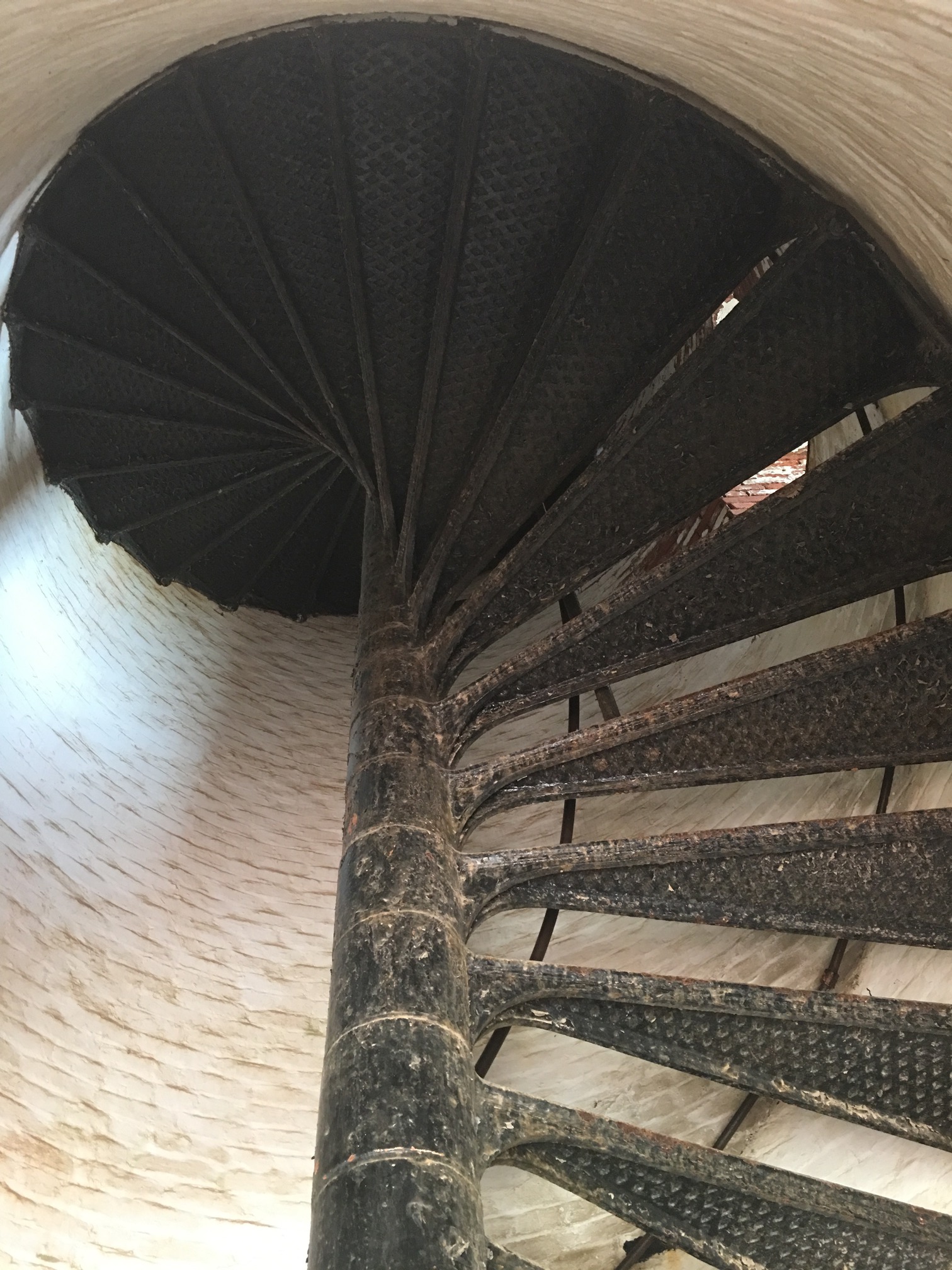
There are a lot of these cast-iron steps to climb to reach the top of the
lighthouse. The online visitors guide has pretty strict rules for climbing
these stairs: must be 42 inches tall, children may not be carried, no big
backpacks or frontpacks, and sturdy shoes are strongly encouraged. There are
handrails, but they are difficult to reach. Just to think, all of these
steps used to be wooden staircases. The view from the top, however, is
completely worth it.
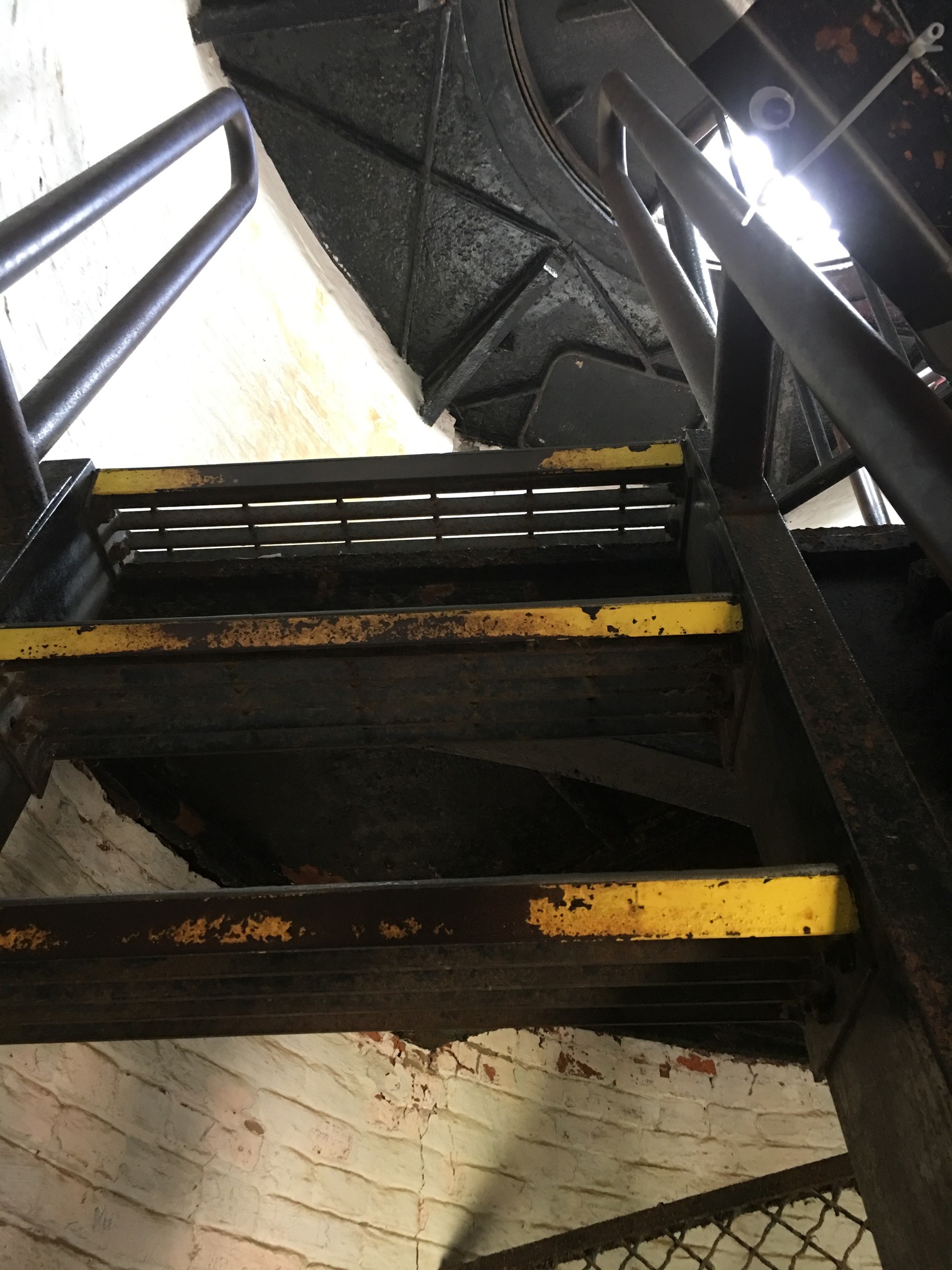
There is a steep ladder to climb to reach the platform that leads to the
glass “birdhouse” atop the Cape Henry Lighthouse. One person at a time,
passage must be negotiated individually between people going up and people
going down. If carrying a purse, it must be secured. The platform that this
ladder sits upon is quite small.
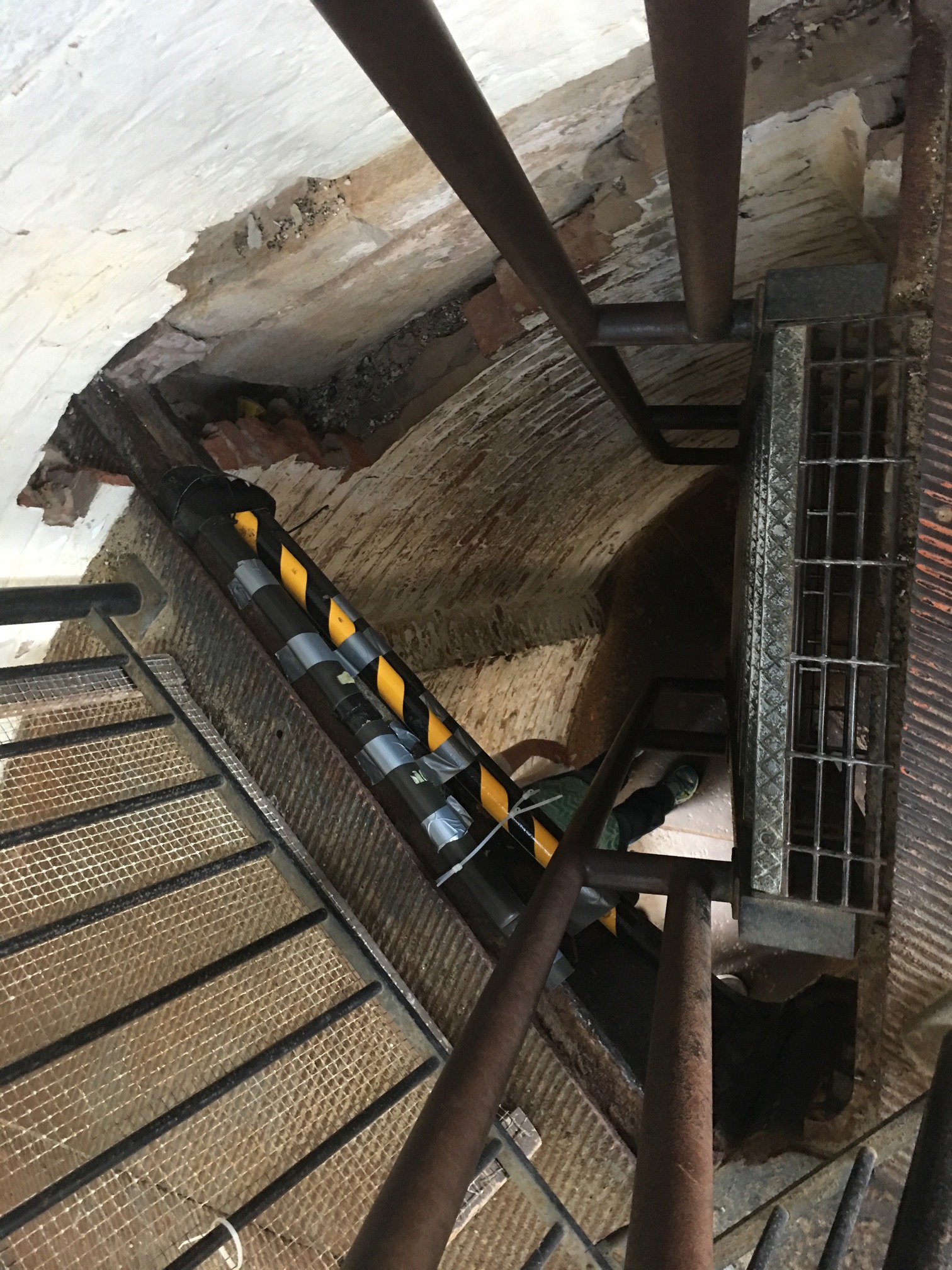
Coming up the ladder wasn’t easy and going down was tricky. Again,
negotiations were made between the top and bottom of the ladder; a person
going down has priority. But in the meantime, the view from the top of the
Cape Henry Lighthouse was amazing.
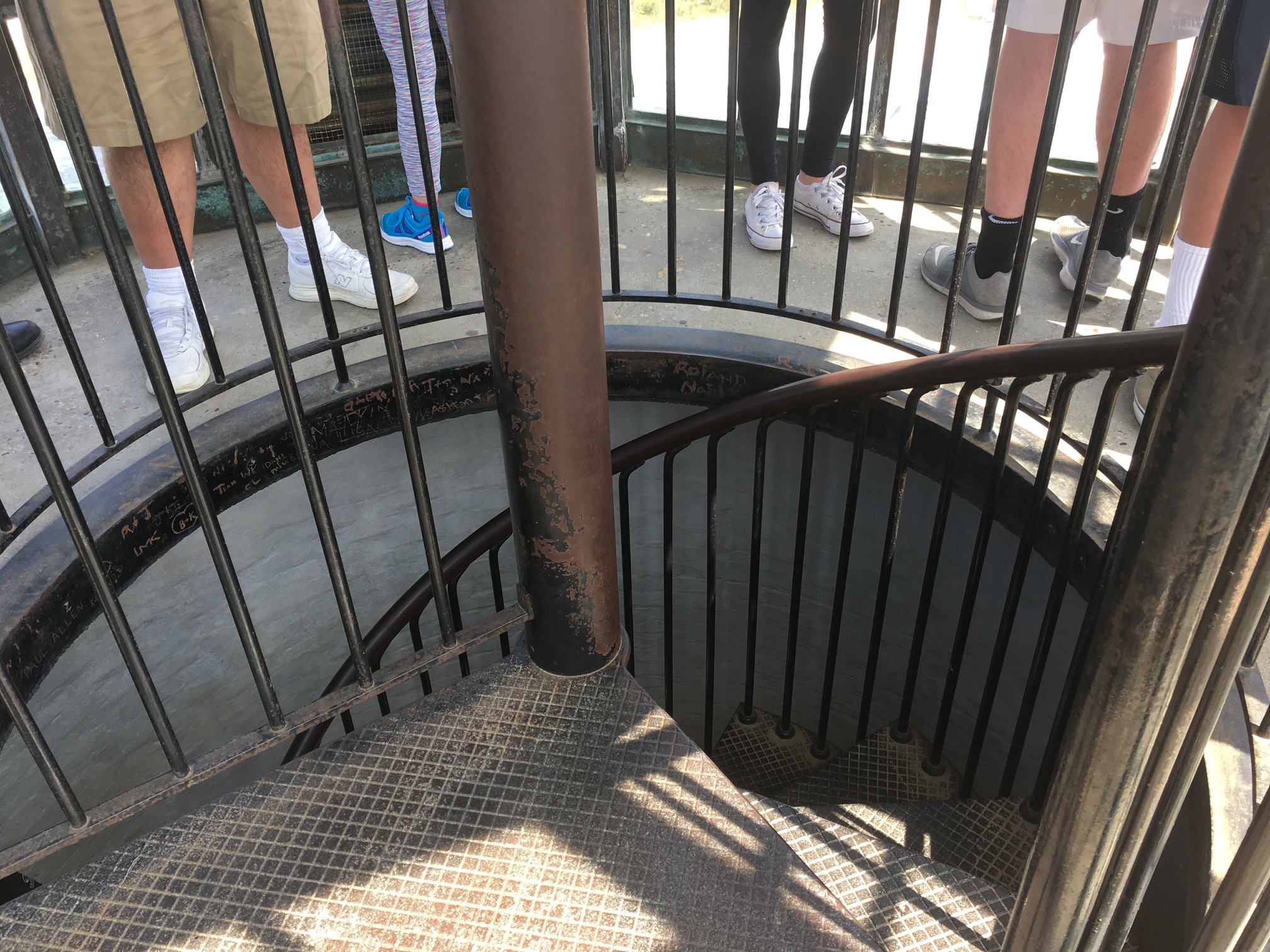
Now that the steep steps have been cleared, there’s only one more spiral
staircase until reaching the observation area. It’s also a tiny platform,
and the temperatures seem to be increasing farther up in the lighthouse. On the way
up, there are windows to look out from, but nothing compares to the view
from the top of the Chesapeake Bay and the Atlantic Ocean from here in the
birdhouse.
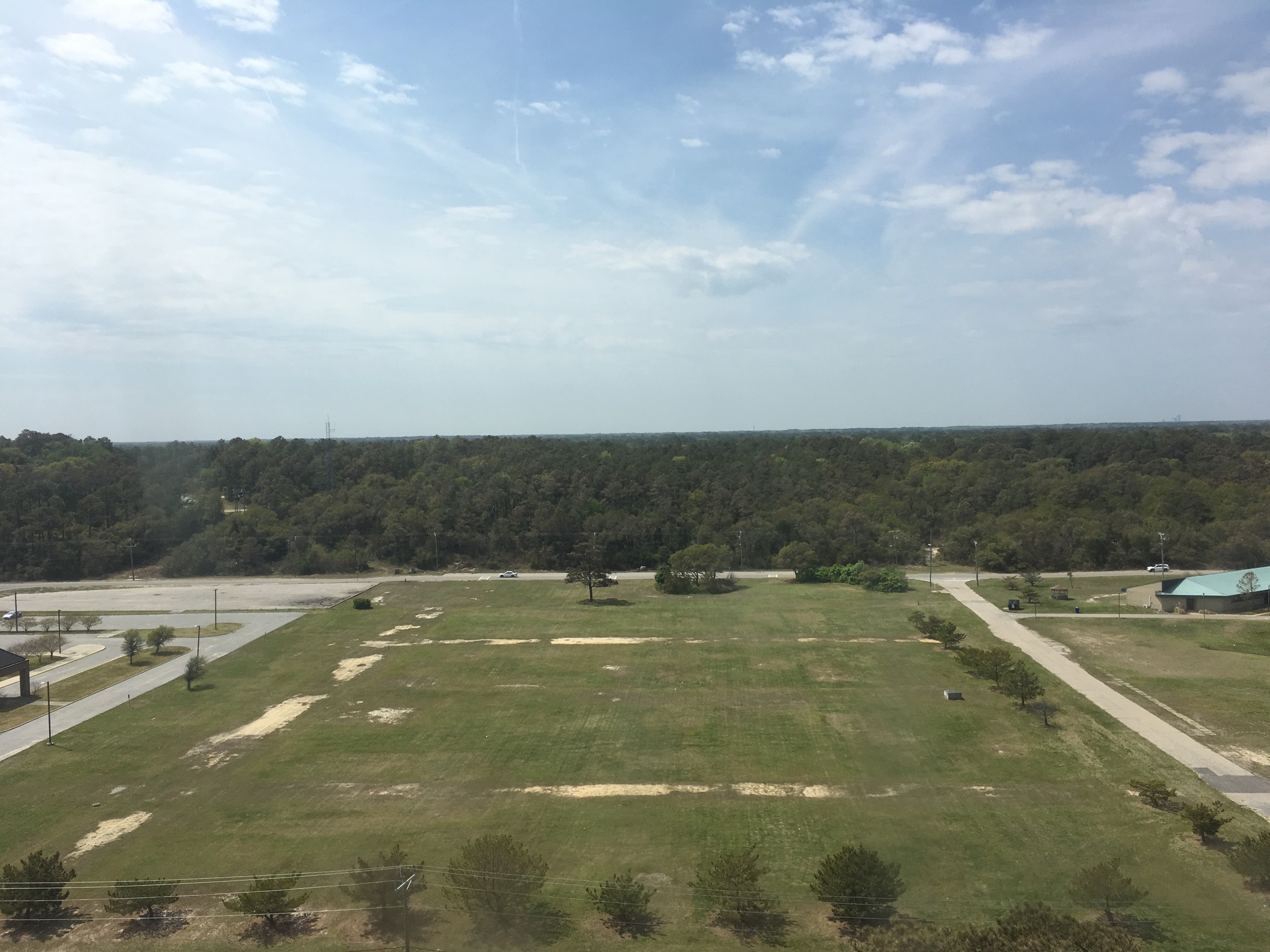
The temperature at this point at Cape Henry, Virginia, was 59 degrees, with
a low of 52 and a high of 65. Staff in the gift shop report that
temperatures in the glass-paneled birdhouse, where the lantern used to be,
can get as high as 145 degrees F in the summer. Staff will close the
birdhouse on such days, in addition to days with high winds and lightning.
It was quite pleasant up top on this date, where a good guess put the temp
at 75 degrees. This view looks south by southwest through a large glass
pane.
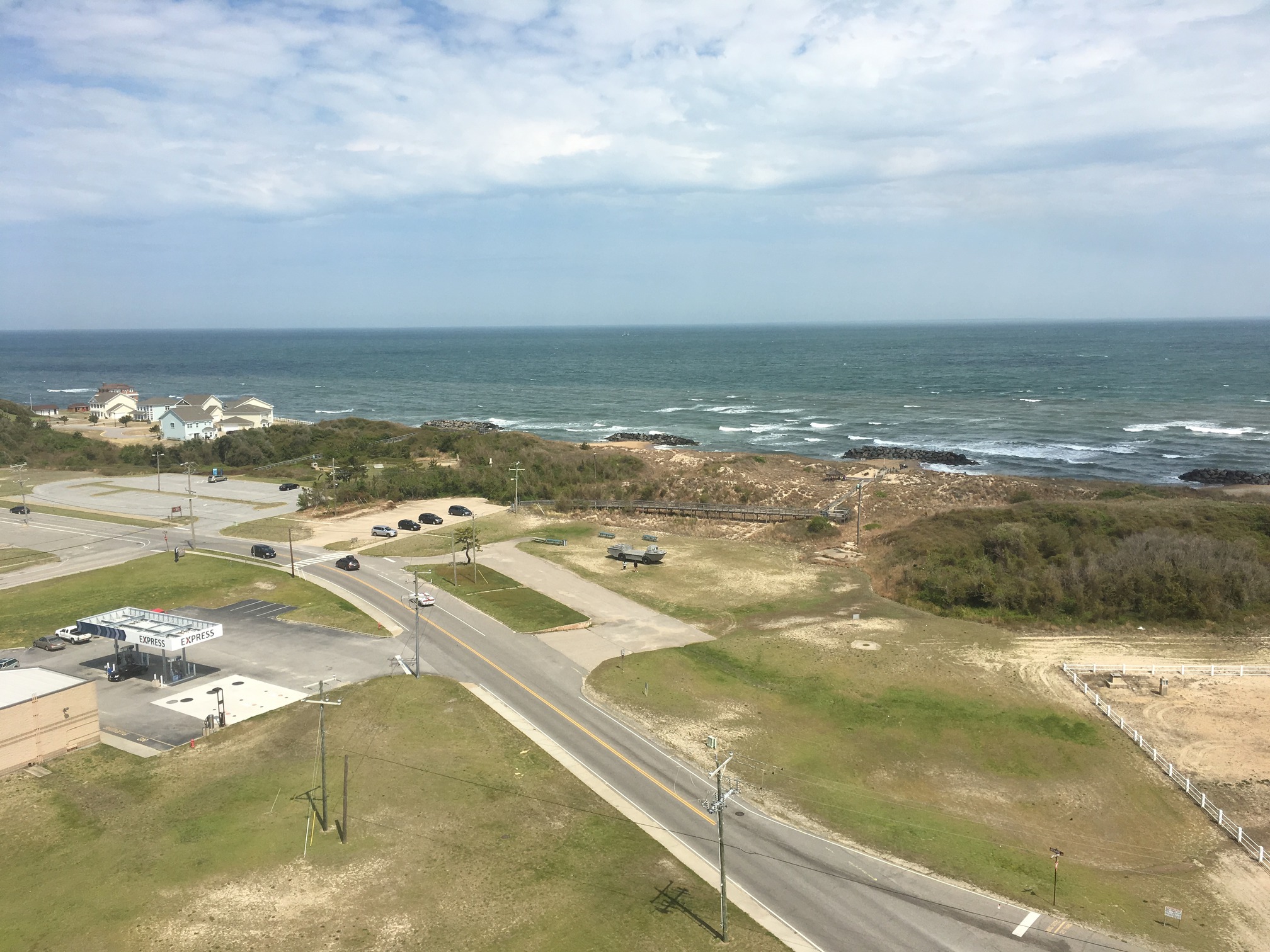
This view from the birdhouse looks north by northeast. This is about the
limit of where visitors can go on the base; an entity called Preservation
Virginia owns the lighthouse and the 1.77 acres it sits on. The guards at
the entry gate will explain where visitors can and can’t go, and are happy
to answer questions.
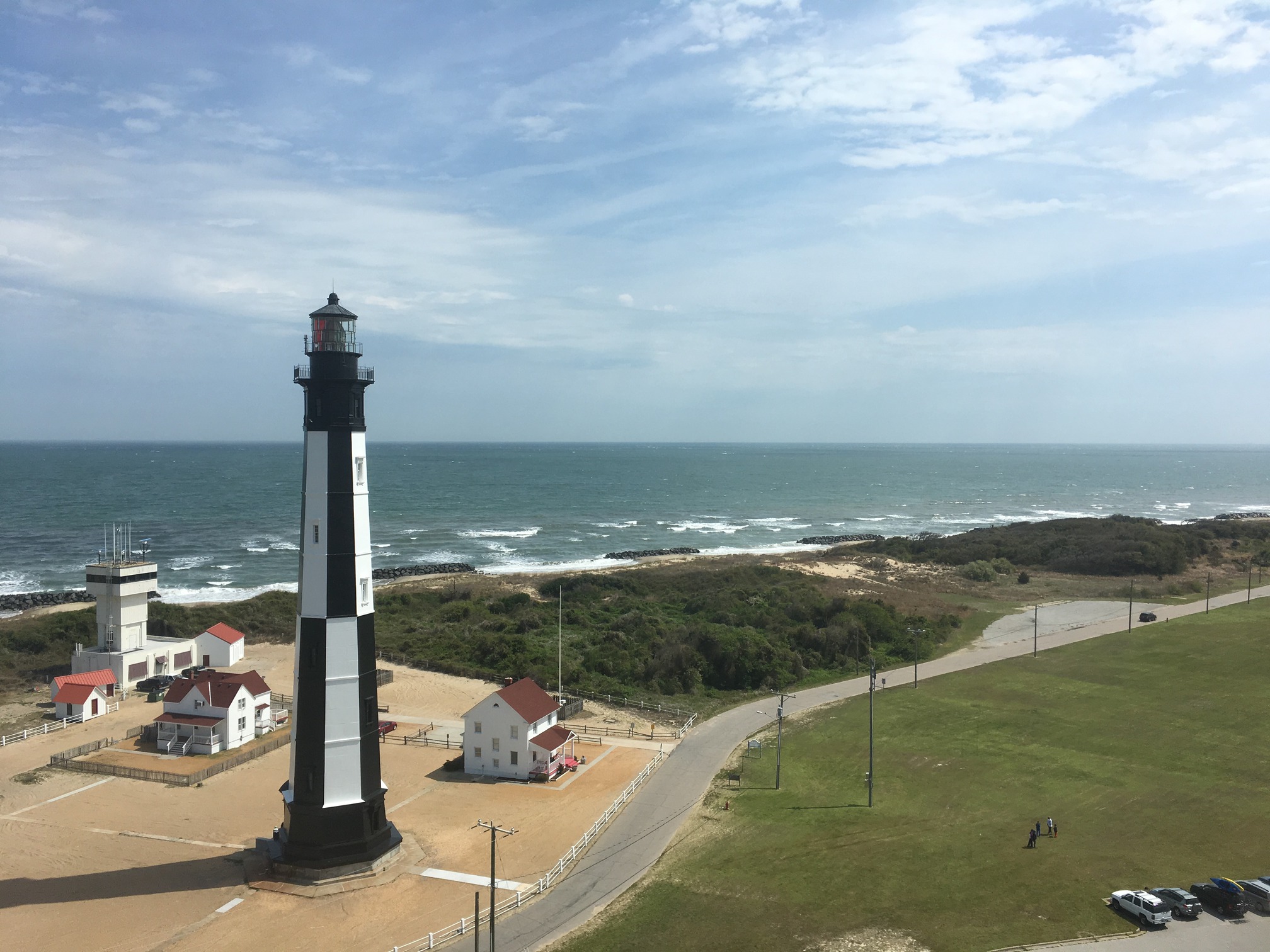
This view of the New Cape Henry Lighthouse looks northeast. The U.S. Coast
Guard maintains this structure, and a Coast Guard district commander once
said that because of its 163-foot height, it was “one of the major landfall
aids for the Chesapeake Bay entrance.” This thoroughly modern lighthouse has
GPS installed; in decades past it has also been the site of radio signal
research.
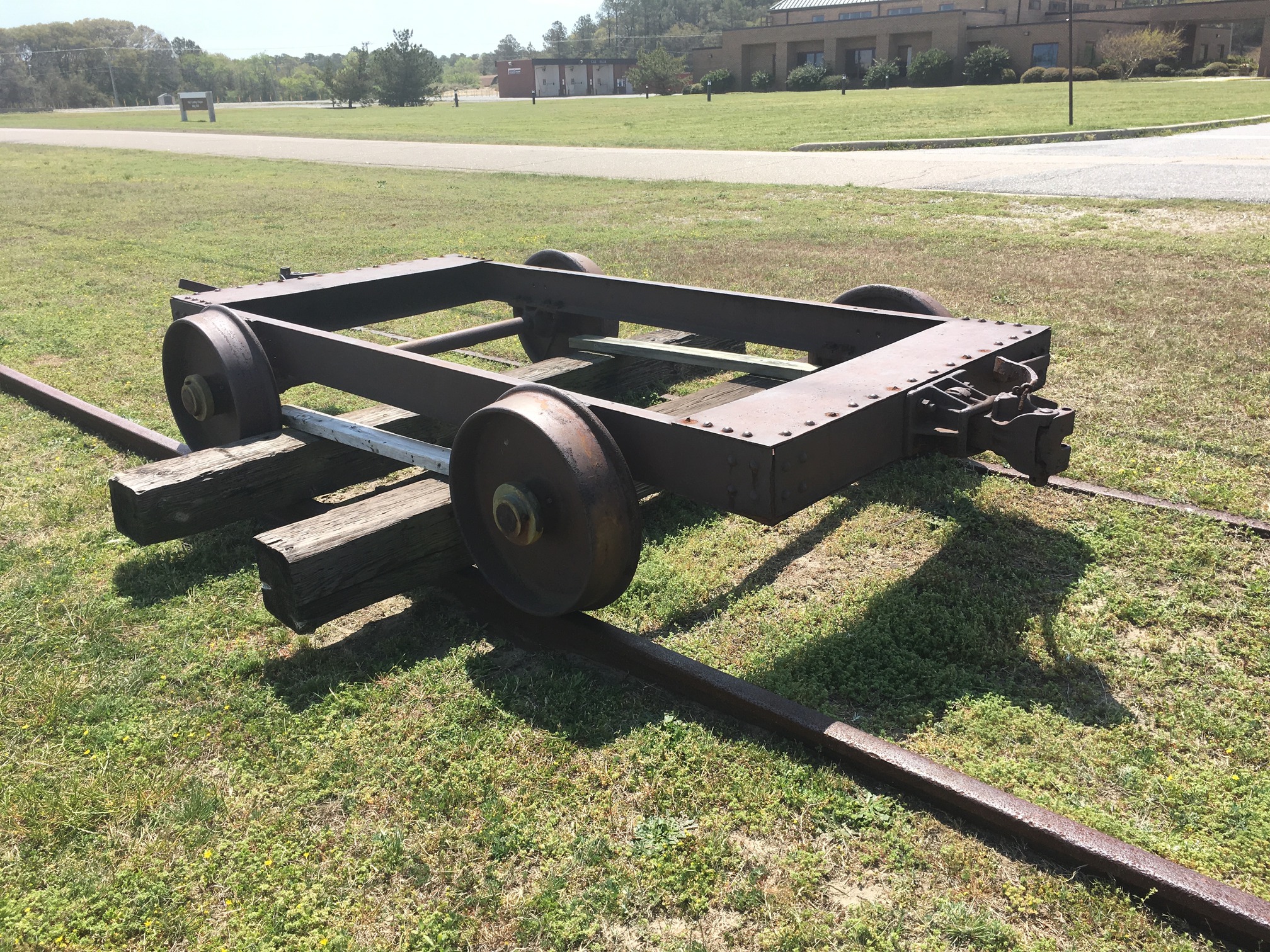
Back on the ground after the climb down, there are many other things to look
at near the giftshop. There are mini-billboards with old photos to read; one
explains how the Army first arrived at Cape Henry in 1916 during World War
I. The Fort Story installation sits on 1451 acres used by the Army’s 7th
Sustainment Brigade, Naval Amphibious Forces, and Special Operations forces.
There was also a railroad that went through here from 1903 through 1950.
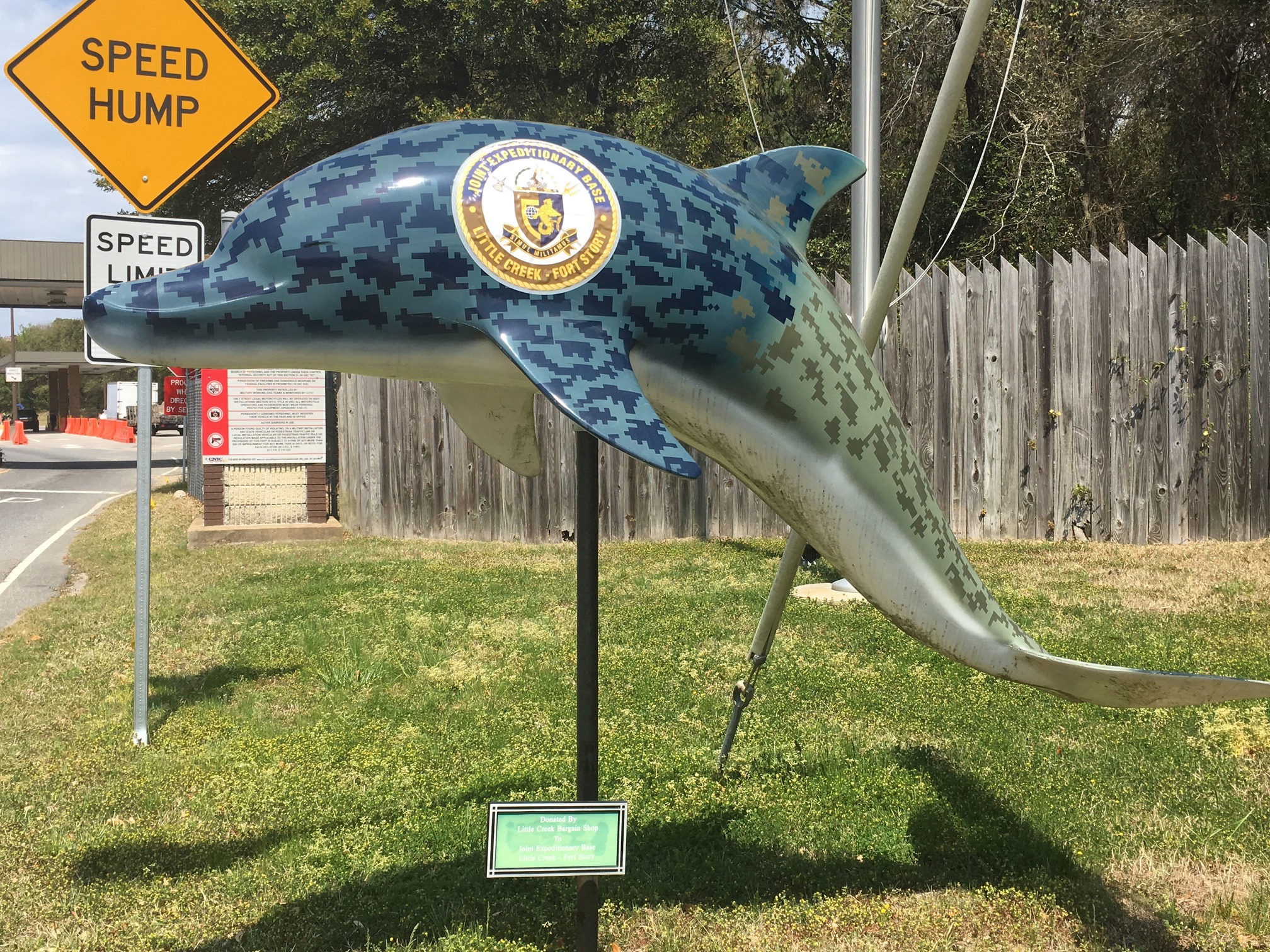
Looking for a porpoise in life? This guy has found his at Fort Story Gate 8
on Atlantic Avenue; he was originally donated by the Little Creek Bargain
Shop Thrift Store nearby. This is the best way to go in to get to the Cape
Henry Lighthouse and the best place to get one last look at the lighthouse
grounds before heading back to Virginia Beach.